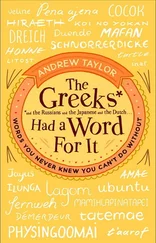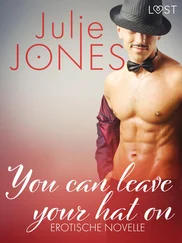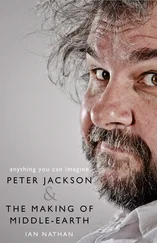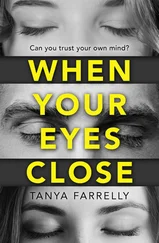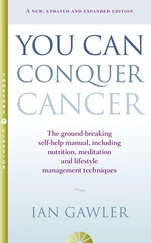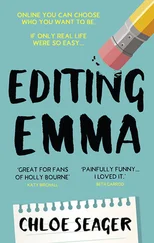In 1969, the English director John Boorman was a hot property. Born in London’s studio suburb of Shepperton, the debonair former documentary maker had made an instant impact with the gritty, modernist Lee Marvin thriller Point Blank , and a brutish tale of duelling Second World War veterans in Hell in the Pacific . His films, thus far, were steely and masculine, but with a touch of the metaphysical at their fringes.
Filled with the zest and fearlessness of youth, and considerable talent with which to wield it, he had approached UA with the ambition of creating an epic out of the Grail legend and King Arthur.
‘Well, we have The Lord of the Rings , why don’t you do that?’ they replied.
Boorman embraced the challenge put before him and over six months, squirrelled away at his tumbledown rectory in County Wicklow, he and co-writer Rospo Pallenberg conjured up something dizzyingly strange and knowingly sacrilegious. The finished 176 pages 1shatter much of the book’s grandiosity.
Boorman had a taste for the lusty and pagan, and while Tolkien may have admired his evocation of nature (Boorman would go on to make The Emerald Forest ) he would have been appalled by all the sex. Before he is ready to look into her mirror, Galadriel seduces Frodo, informing him, ‘I am that knowledge.’ Boorman is dragging chaste Tolkien towards puberty, but completely overcompensates: Aragorn revives Éowyn with a magical orgasm, and even plants a hearty kiss upon Boromir’s lips at one point. The director also gets carried away with the book’s reputation as a hippy totem. Wild flowers are a chronic leitmotif, and the Council of Elrond turns into a Felliniesque circus performance with dancers, jugglers and a lively dog that symbolizes fate. To read it all is to be mildly disturbed yet mesmerized …
Gone are hobbit holes, Bree and Helm’s Deep. Gimli opens the doors to Moria with a jig, while Merry and Pippin are played as a Halfling Laurel and Hardy. There is much cavorting and way too much singing. Sillification lies perilously close. But there are some striking inventions, such as the Fellowship discovering they are walking across the bodies of slumbering Orcs in Moria. And Boorman goes some way toward taming the book’s gigantic architecture into a single, three-hour film.
UA didn’t understand a word of it.
During his seclusion, there had been a major reshuffle at the studio. The script, which had cost $3 million to develop, was tossed out. Boorman later claimed such shortsightedness mainly came from the fact that, ‘No one else had read the book.’
Boorman is too rich a filmmaker to dismiss outright what might have been, however provocative and untamed. After briefly attempting to keep his live-action vision alive at Disney, he would channel much of the effort he put into The Lord of the Rings back into the Arthurian legend with the altogether splendid — and altogether grown-up — Excalibur . Bursting with Boorman’s visual exuberance, it is earthy, witty, fantastical (at times surreally so) and highly libidinous. It is also an ‘absolute favourite’ of Jackson’s — he has Mordred’s golden armour (made from aluminium) in his collection. Visually, it would have a huge influence on him as director and, coming full circle, on the sensibility he would give to The Lord of the Rings : the exotic contours of the armour; the scabrous weaponry; the mossy, lyrical Irish landscapes. It has the heft of the real.
Nicol Williamson’s whimsical, meddling Merlin has more than a touch of Gandalf about him.
Jackson has never had the opportunity to meet Boorman, who at 84 still lives in rural Ireland, but his manager Ken Kamins once represented the English director and has stayed in contact.
‘John sent a nice note through Ken once,’ recalls Jackson, ‘saying that he loved The Lord of the Rings , and he was very happy that I got to make it.’
Boorman has gone on record saying how grateful he is that he didn’t get to make his film. That may have prevented the project from ever passing to Jackson, whose trilogy he thought was a marvel akin to the construction of the great cathedrals of medieval Europe. There was something secret and vast about the films, a work of almost divine providence.
Then there was the tale of the Beatles. How the Fab Four, at the height of their own impossible fame, had sought out the great Stanley Kubrick at his St. Albans estate to help create a multimedia musical of The Lord of the Rings in which they would star and, naturally, provide a backbeat.
Testament to Jackson’s lifelong passion for the Beatles can be found in the vision of a homemade cut out of the Sergeant Pepper-era foursome found in the sky blue, wheelchair-enabled Ford Anglia in Bad Taste . Jackson had wanted to spot Beatles songs throughout the score, but the rights were far beyond his debut film’s paltry budget.
One of the unforeseen spoils of his success would be a chance to meet a genuine hero. When Jackson encountered Paul McCartney at the Oscars following The Return of the King ’s glorious haul of trophies there must have been a thousand questions stored away in his head, but he ‘pinned him down’ about that story of a Tolkien adaptation.
Like Boorman, McCartney had praised Jackson’s interpretation of Tolkien’s book. He was a huge fan of the films. Each Christmas, as was the habit of many families, he would make a ritual outing with his kids to catch the next instalment. Quite how McCartney, one of the most famous faces on the planet, managed to frequent what sounded like his local multiplex so casually raises a sceptical Jackson eyebrow. The director suspects the pop icon probably found other means of seeing the films, but the compliments were sincere. And now he had McCartney’s undivided attention, he decided to see if there was any truth to the Beatles’ attempt to bring their youthful brio to Middle-earth?
It was true, said McCartney. The band had been on the third film of a three-picture deal with UA. The deal had thus far proved fruitful with the success of A Hard Day’s Night and Help! . Considering where to go next, and having collectively read the book, The Lord of the Rings seemed a perfectly sensible avenue for the band. It was John Lennon who was spearheading the concept.
‘Paul was going to play Frodo, George was going to play Gandalf, John was Gollum, and Ringo was Sam, I think,’ Jackson can’t help but chuckle. ‘And he said that they all showed up at Stanley Kubrick’s house to try and persuade him to be the director. I would love to have been a fly on the wall for that.’
During his lengthier dalliance with a potential adaptation, Boorman had wondered if he might cast the Beatles as the hobbits.
Kubrick, with four Liverpudlian superstars standing on his doorstop uninvited, did the decent thing and asked them in for tea. He listened to their offer, was very polite, but admitted it wasn’t for him. He was in the middle of planning a colossal life of Napoleon, which would eventually be scuppered when MGM decided that epics were no longer commercial.
‘Did you try another director?’ Jackson asked. There was also talk that Lennon was going to approach David Lean next.
‘No, Tolkien killed it,’ McCartney replied. The author’s misgivings were never given, but can perhaps be assumed.
According to UA, it was Yoko Ono. The Beatles split a year later.
*
So it wasn’t Kubrick or Boorman or the Beatles, or even Walt Disney — rumoured to have craved the rights in the sixties, only to be met with Tolkien’s disdain for his pretty fairy-tales — who first brought the book to the big screen. Instead, it was a maverick animator named Ralph Bakshi, an artist determined to rattle convention. That is except when it came to The Lord of the Rings , which he treated almost as Holy Writ. However, the flawed results still spoke more about the titanic complexity involved in both bringing the book under control and getting Hollywood to grasp its potential.
Читать дальше



